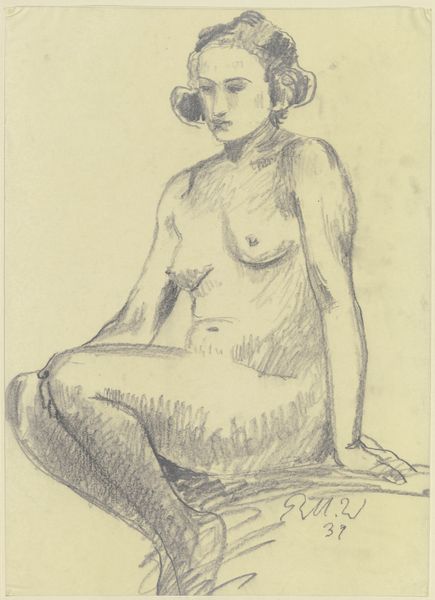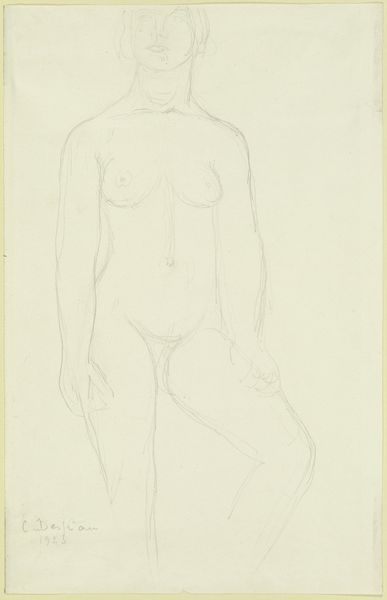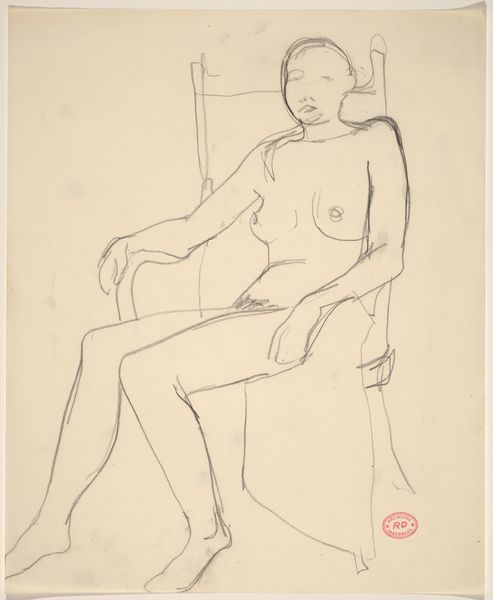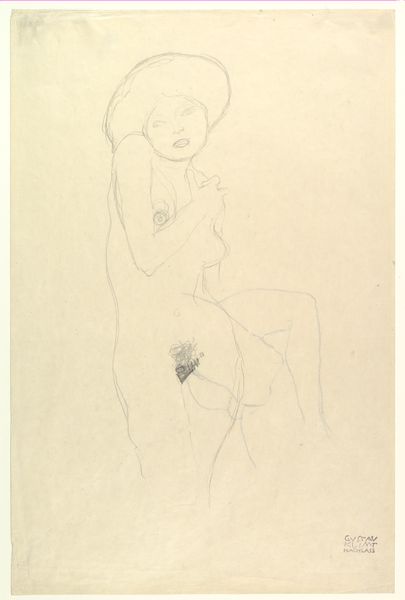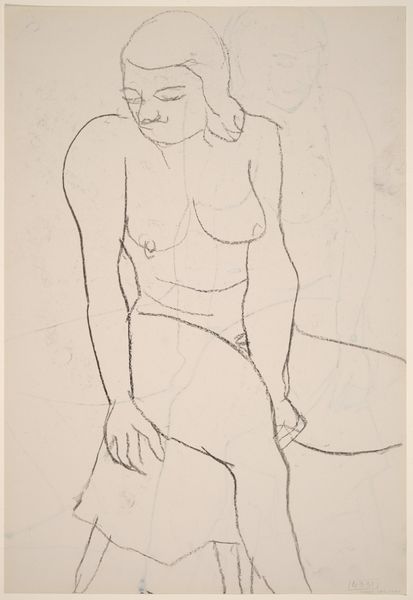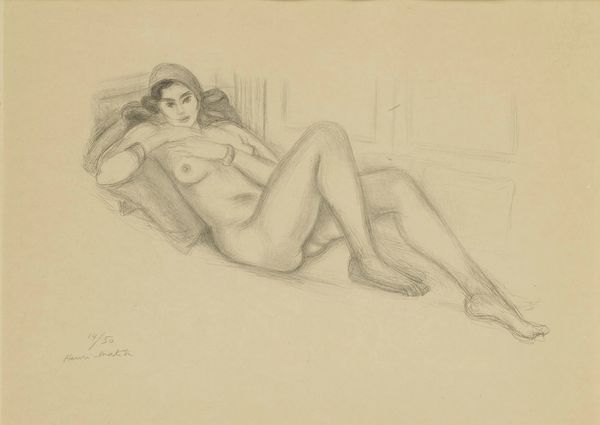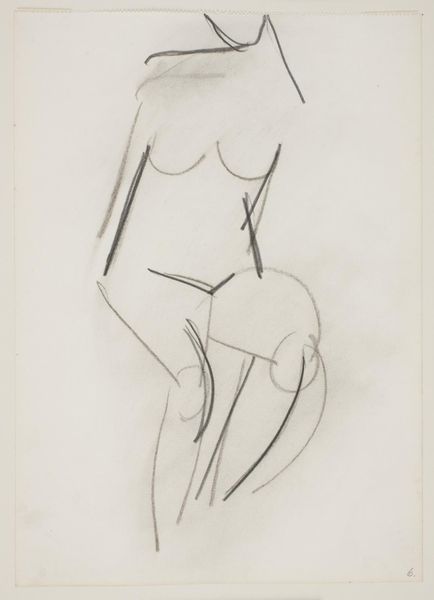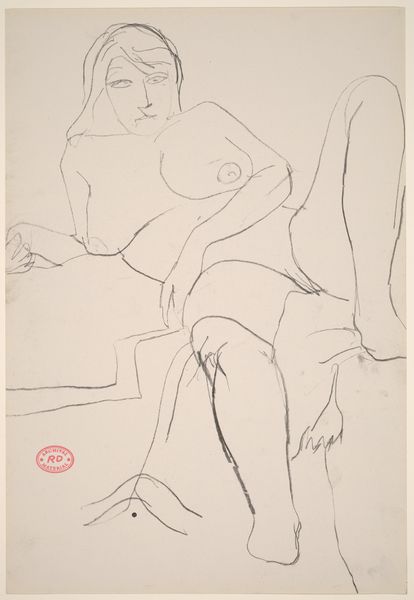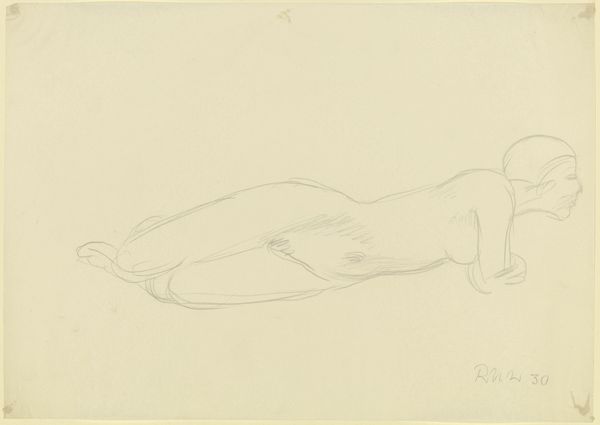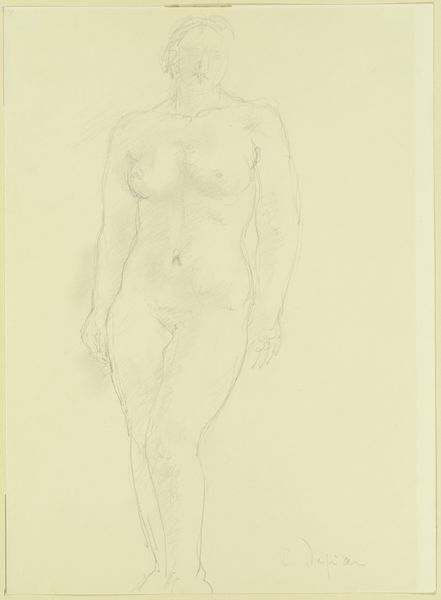
Copyright: Modern Artists: Artvee
Curator: Henri Matisse created this work, "Le modèle nu assis," in 1919. It’s a pencil drawing, quite delicate, wouldn't you agree? Editor: Delicate indeed. The lines are so faint; it almost fades into the paper. A quiet intimacy pervades the drawing. Curator: Exactly. The medium lends itself to that feeling. We see Matisse exploring the contours of the human form with a remarkable economy of line. It speaks to his draftsmanship, focusing purely on form. Do you see how the lines delineate the shape, not decoration here at all? Editor: It’s fascinating how he suggests volume and shadow with such restraint. Look at how lightly he indicates the cushion she is sitting on, and the discarded shoes. How do we understand these shoes in terms of context: Was this sketched on site? And if so, in whose home or studio? What does the discarded pair of shoes speak to? Curator: Such elements certainly invites such interpretations, however I am inclined to simply admire the way the varying pressures of the pencil create depth, particularly around her face and the drapery of the cushion. Editor: Yet that face seems almost unfinished compared to the detail given to the hands, don’t you think? Almost like she's a working-class woman caught sitting mid task. I wonder about his relationship with the model here, about the production and exchange. Was she paid well? Was it an open or abusive relationship? Curator: Those are intriguing lines of thought. However, consider the period; Matisse often worked within established academic traditions, though challenging them in his use of line and form. These portraits served as studies in form. Editor: Fair enough, it certainly does feel like he sought new ways of expression. To consider production brings out many unknowns but is precisely what engages me as a student of the social impact of material constraints. Curator: Ultimately, what’s striking is how he managed to capture the essence of the figure with such deceptive simplicity, don't you agree? Editor: I do. And how focusing on materials provides clues as to that complex social context that otherwise seems faded. It leaves us, if anything, with many more questions.
Comments
No comments
Be the first to comment and join the conversation on the ultimate creative platform.
